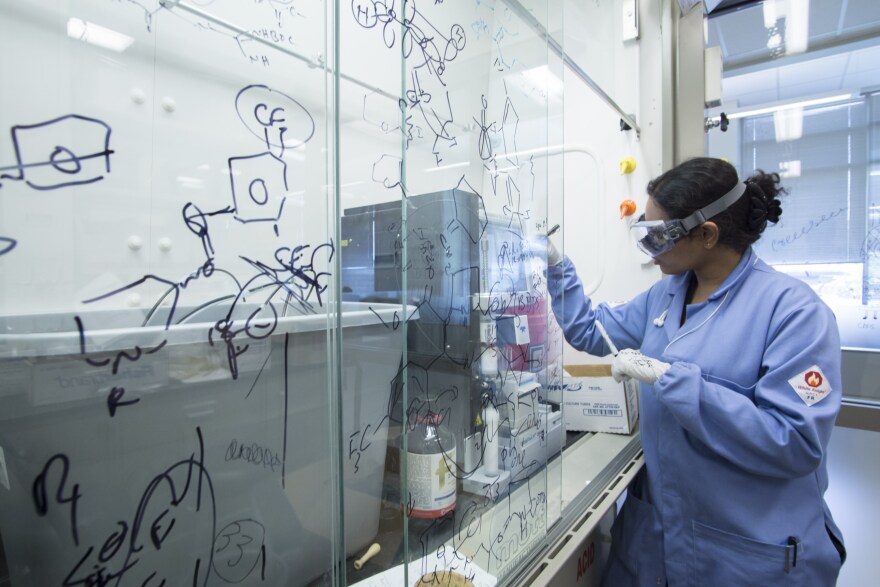Purdue was one of 270 institutions across the country who rallied their support Wednesday for Joe Biden’s “Cancer Moonshot,” a recently-announced federal iniative that looks to fund and mobilize researchers to, in their words, “double the rate of progress toward a cure.”
The initiative’s “moonshot” title evokes an optimistic time in history…when scientists achieved something Purdue alum and NASA astronaut David Wolf says seemed as impossible as finding a cures for cancer.
“That’s the kind of energy that’s the kind of approach the kind of culture and innovation we need to bring to solve this group of disease we call cancer and put them into the rearview mirror,” he says.
The Cancer Moonshot includes a slew of new measures, some less nebulous than others. One of its first successes came when the FDA this year made a commitment to fast-track approval for combination cocktails of cancer-fighting drugs.
However, critics say comparing a cancer cure to a single “moonshot” distorts the fact cancer is actually many different diseases that need to be researched and treated separately.
Wolf says similarly, even if the view from a television set made the moon landing appear as a singular goal, the reality is actually closer to what cancer researchers currently face: “It took many different technologies, kinds of people,” he says. “How do you make food for space? Doctors, engine propellants, combustion? In any case, it’s similar to cancer in that there are so many innovations that need to occur. It is a good comparison in my mind.”
Additionally, others have noted the Moonshot’s billion-dollar price tag is only a fraction of what it takes to manufacture even a single cancer treatment.
Purdue Center for Cancer Research Director Tim Ratliff says it’s not all about big-ticket funding, though. Purdue scientists research everything from comparative oncology in Scottish terriers to spectrometric imaging of brain tumors. But too often, he says, that data gets stowed away in individual research centers. Thus, a big part of Moonshot initiative focuses on how scientists share information. That includes funding for a new server-like system that regulates and shares data between institutions, such as colleges and the National Institutes of Health.
“All l these different institutions work with different systems and getting communications between those systems is not so easy,” he says. “What we’re trying to do now is develop a system that everything can be downloaded into and be shared much more widely."
He says the National Institutes of Health are working on creating a server-like data sharing system into which institutions such as Purdue can upload research results. Ratliff says Purdue will know more about implementing the system in the fall.
The moonshot, Ratliff says, also has made NIH grants more accessible to research institutions. That money was previously earmarked for clinical trials only, but now schools such as Purdue can apply to use it for lab studies and experiments.
But he’s also realistic: the goal isn’t actually finding a cure for most cancers. It’s creating treatments that make the disease into a chronic, non-life-threatening, condition.
“The goal is cures, of course,” he says, emphasizing the “s”. “Realistically, what we think we can do in a reasonably short time is to make cancer a chronic disease.”





